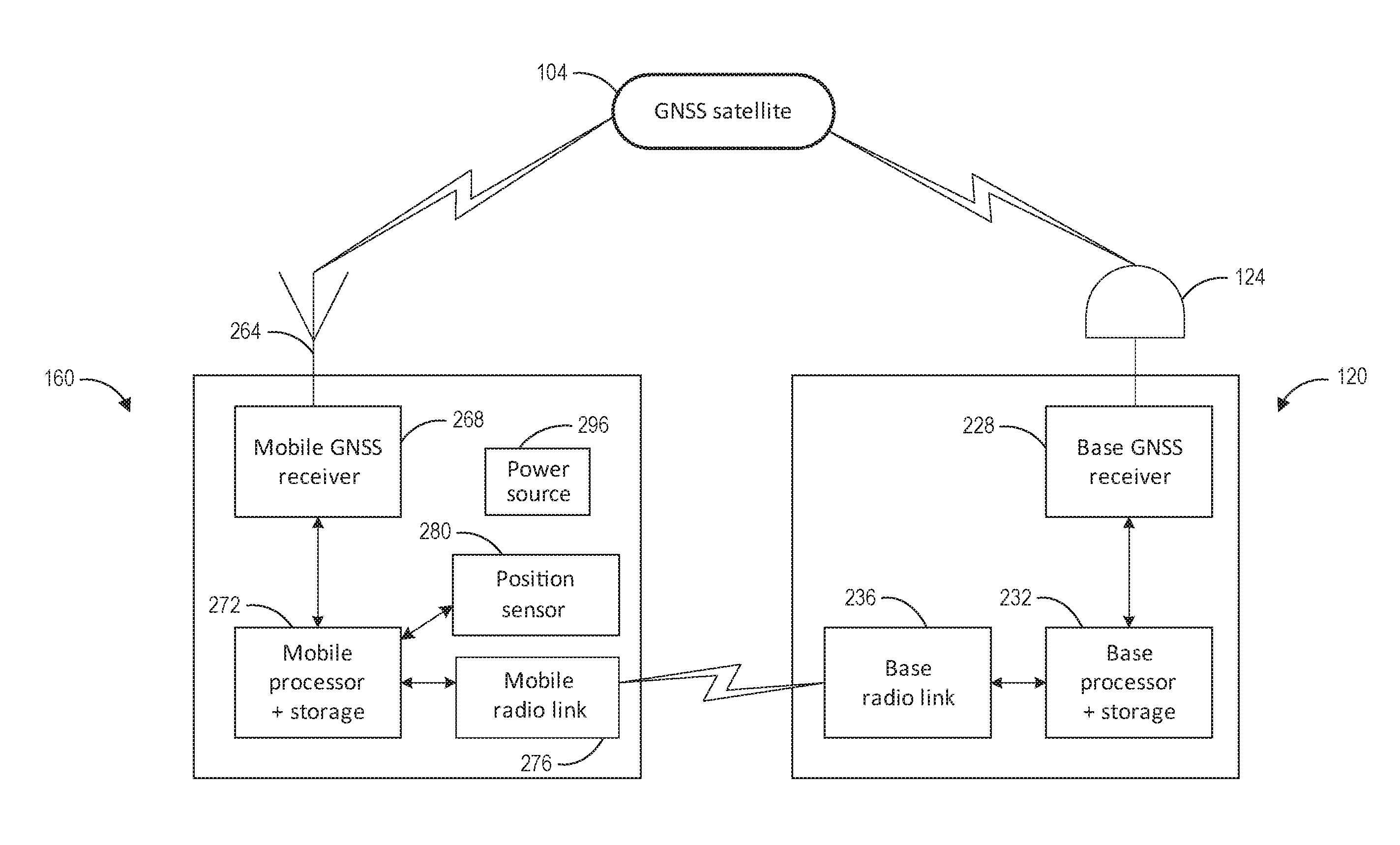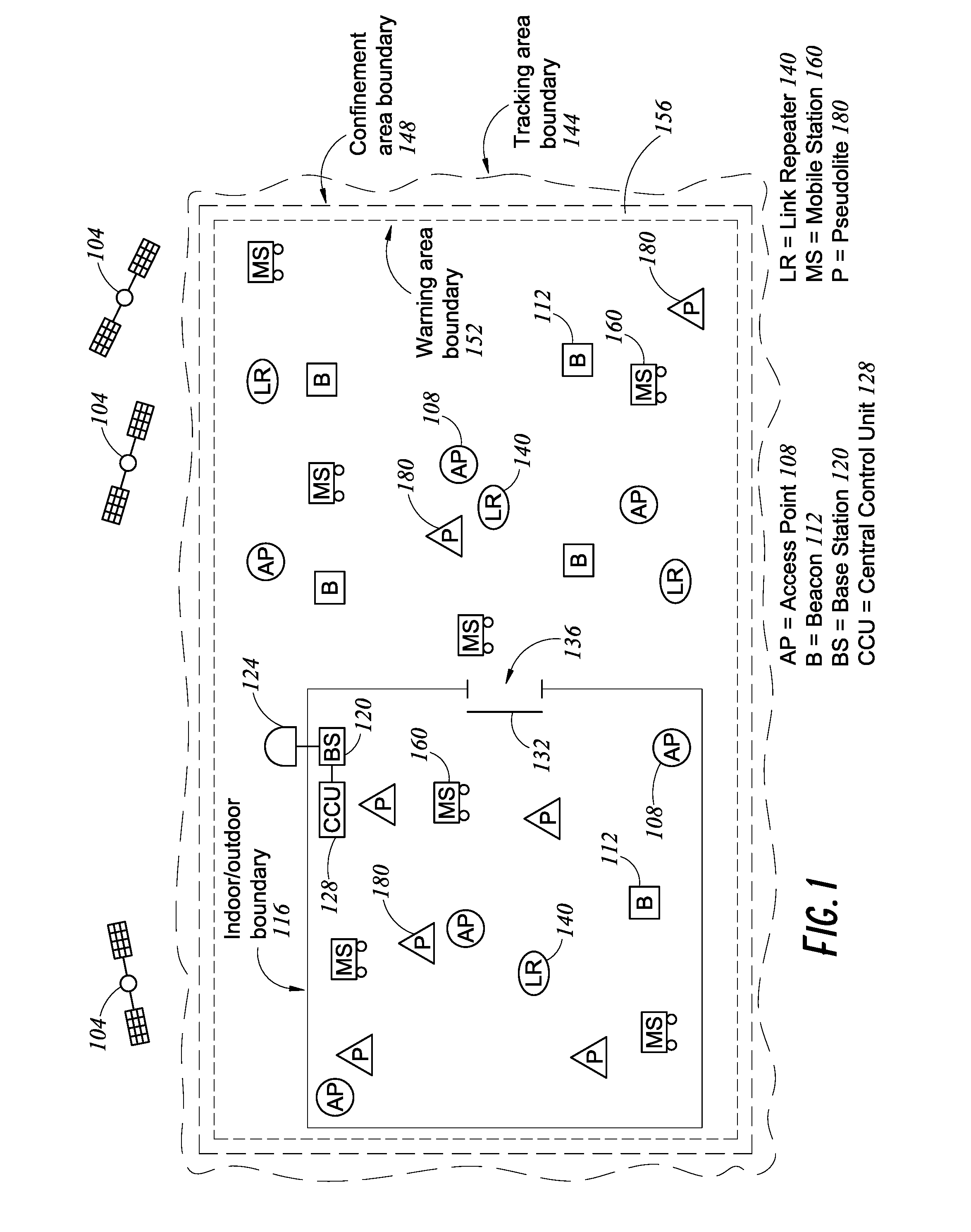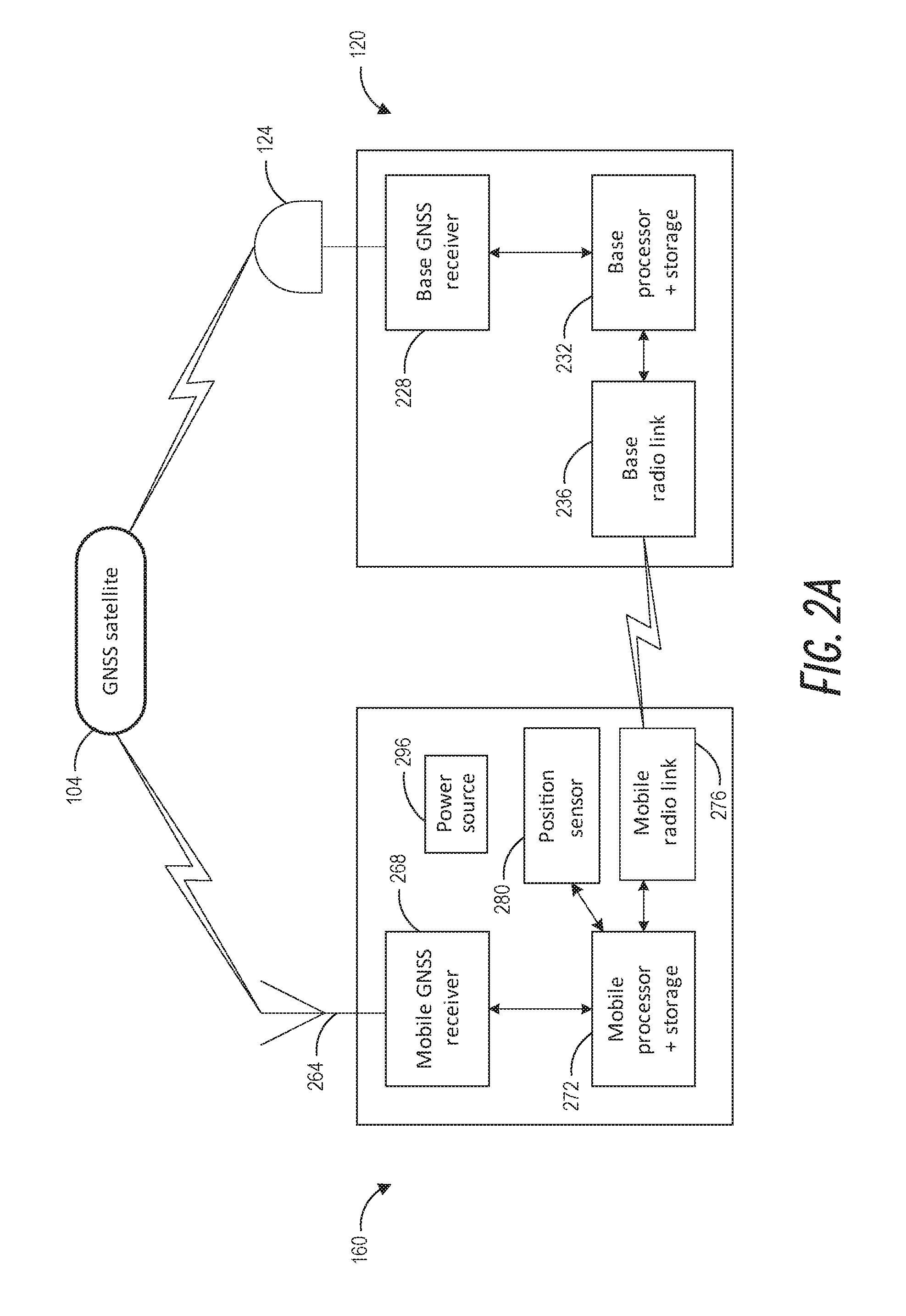Low-energy consumption location of movable objects
a technology of low energy consumption and movable objects, applied in the field of system and method for locating movable objects, can solve the problems of gnss receivers and significant energy consumption of gnss, and achieve the effect of energy consumption of mobile stations
- Summary
- Abstract
- Description
- Claims
- Application Information
AI Technical Summary
Benefits of technology
Problems solved by technology
Method used
Image
Examples
example pseudolites
[0039]There are existing devices known as pseudolites (for “pseudo-satellites”) which transmit signals that mimic (to varying degrees) the GNSS signal structure, so that a suitably equipped GNSS receiver can maintain a position fix by receiving GNSS signals from a pseudolite when fewer than the minimum number of GNSS satellites are in view (including the case of no satellites in view). Pseudolites can be fixed in positions to create (at least in part) a ground-based positioning network. The GNSS receiver can be configured to receive signals from one or more pseudolites and / or one or more GNSS satellites to determine its position. One market for pseudolites is in mining, since GNSS RF signals cannot penetrate into the mine. Pseudolites can be placed in urban canyons, retail shopping centers, warehouses, indoor environments (where GNSS signals are blocked or weak), etc. to permit position determinations for objects in those spaces. In practice, pseudolites are almost always fixed in p...
example operation
Scenarios
[0101]FIG. 6A illustrates examples of some operation scenarios of a low-power GNSS mobile system. A dashed line 620 denotes the boundary of a tracking area. Curves 640 and 660 illustrate movements of two mobile stations, mobile station A and mobile station B, respectively. Open circles on the curves denote positions when the mobile stations wake up from a sleep mode. Solid circles on the curves denote positions when the mobile stations enter a sleep mode. Small arrows from open circles illustrate direction of interest at that position / time. A direction of interest might include a direction toward a nearby mobile station or other obstacle (e.g., to avoid collision) or a direction toward the nearest portion of the tracking area boundary 620 (e.g., where a confinement action may occur in a geofencing scenario). Six arrows around the perimeter illustrate locations of GNSS satellites relative to the tracking area.
[0102]When more GNSS satellites are visible from a mobile station,...
PUM
 Login to View More
Login to View More Abstract
Description
Claims
Application Information
 Login to View More
Login to View More - R&D
- Intellectual Property
- Life Sciences
- Materials
- Tech Scout
- Unparalleled Data Quality
- Higher Quality Content
- 60% Fewer Hallucinations
Browse by: Latest US Patents, China's latest patents, Technical Efficacy Thesaurus, Application Domain, Technology Topic, Popular Technical Reports.
© 2025 PatSnap. All rights reserved.Legal|Privacy policy|Modern Slavery Act Transparency Statement|Sitemap|About US| Contact US: help@patsnap.com



